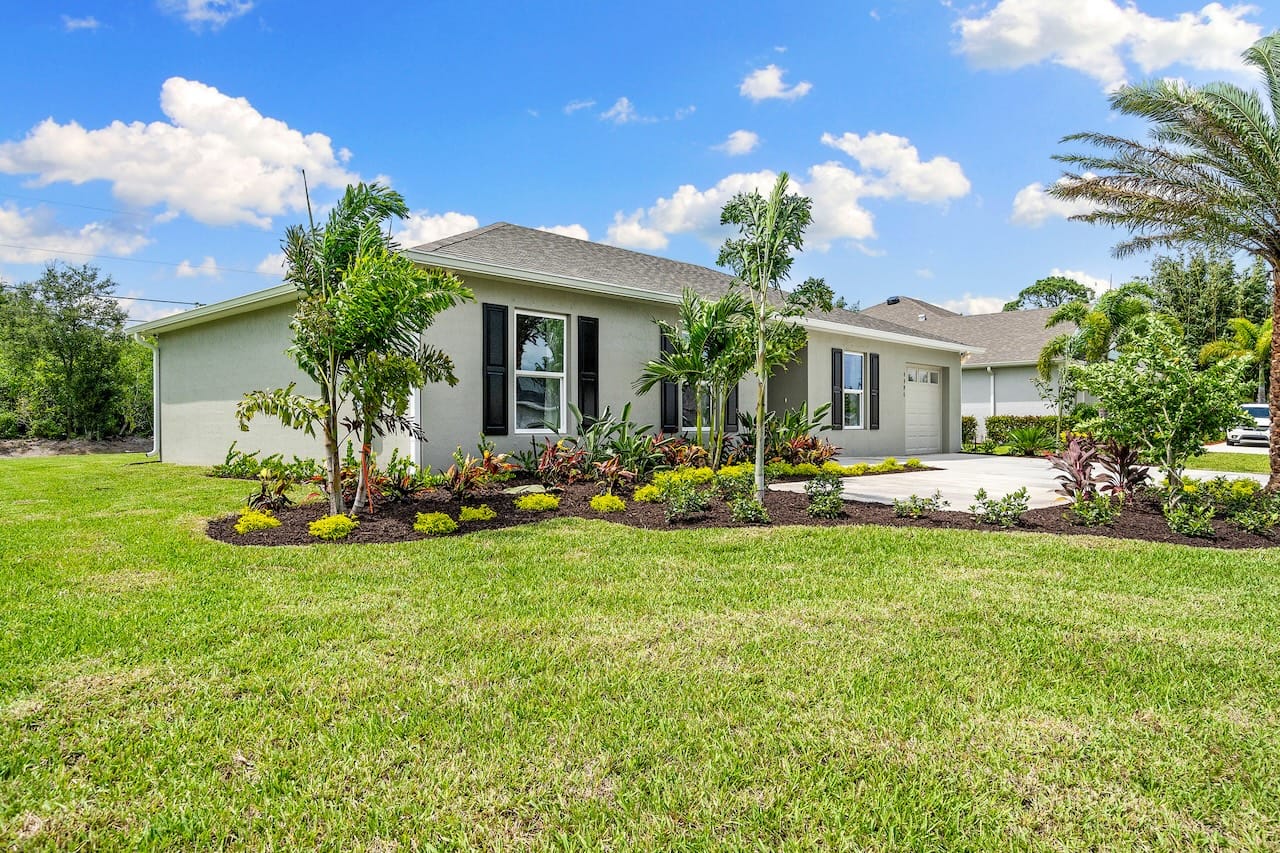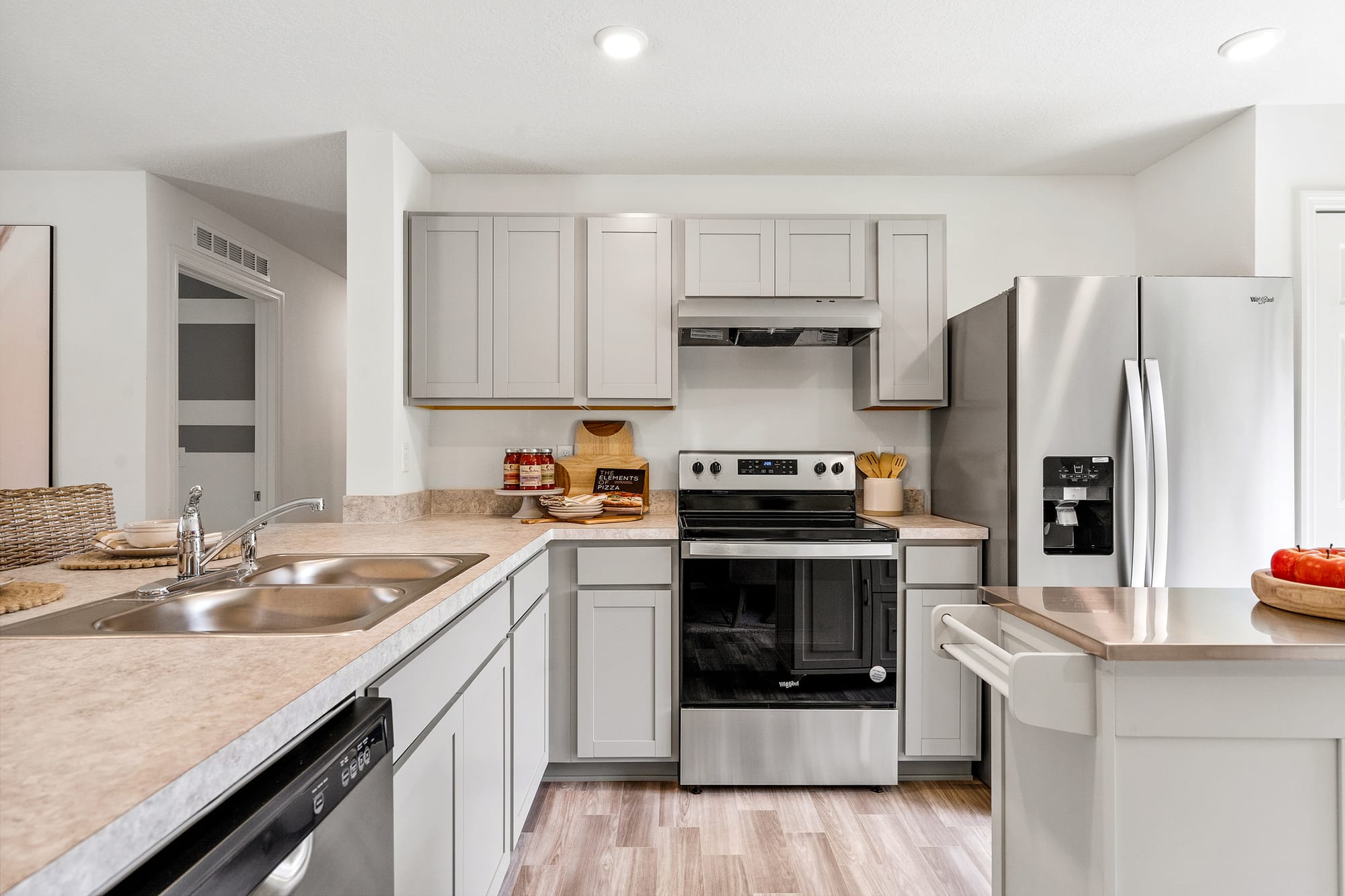Architecture
Holiday Builders' New Inspire Line Faces Affordability Challenge Head-On
One of the critical challenges Holiday Builders faced was balancing affordability with the need for operational efficiency. Holiday's Inspire homes are built using a streamlined construction process, designed to reduce variability and increase predictability.

Housing affordability is a Sisyphean battle.
A generation of underbuilding and three bumper-crop generations of adult household demand mean affordability's uphill struggles define our time, and will likely continue to do so.
Business cases that reveal even the merest fissure in that solidly and terrifyingly daunting narrative are today's sparks of hope for the possibility the arc of that narrative might be bent toward solutions.
Right now, affordability issues continue to drive market uncertainty. Mortgage rates remain high, land prices are soaring, and inflationary pressures have tightened the financial capabilities of many potential first-time homebuyers.
However, the Florida-based Holiday Builders has implemented a strategic pivot to adapt its product offerings to meet the market’s affordability challenges while maintaining its own operational efficiency and profitability.
Richard Brown, President of Melbourne, FL-based Holiday Builders, explains how the company has dramatically re-engineered its product portfolio, mainly through the introduction of Holiday's Inspire collection. This new offering is specifically designed to appeal to price-sensitive first-time buyers while aligning with the company’s business objectives. To bring Inspire to life, Holiday Builders undertook a major affordability initiative by value-engineering its entry-level home product, optimizing its construction processes, and positioning itself for growth amid scarce, expensive land resources.
Holiday Builders’ strategy of value-engineering its entry-level Inspire collection mirrors a broader industry trend seen across major homebuilders nationwide. Builders like D.R. Horton, Century Communities, Ashton Woods, LGI Homes, Lennar, and PulteGroup have similarly embraced product lines that balance attainability with operational efficiency, all designed to meet the affordability needs of first-time buyers while maintaining profitability for the builder.
For example, D.R. Horton’s Express Homes line is tailored to entry-level buyers, offering standardized, no-frills homes designed for quick construction on a spec basis. The focus is on reducing construction variability, improving cycle times, and keeping homes move-in ready, much like Holiday Builders’ Inspire series. Similarly, Century Communities’ Complete line offers streamlined, no-option homes that allow builders to control costs, enhance efficiency, and pass savings on to buyers. Both product lines aim to eliminate the complexity that often accompanies customization, helping homebuilders deliver inventory more quickly and affordably.
Other builders have leaned in with their entry-level offerings. Ashton Woods’ Starlight Homes and LGI Homes’ basic product line both focus on standardized designs, built for first-time buyers looking for an affordable path to homeownership. Lennar’s Everything’s Included (EI) approach, which bundles popular upgrades into one fixed price, offers simplicity for buyers while also giving builders greater control over costs and construction timelines. PulteGroup’s Centex line similarly caters to affordability and efficiency, with homes designed for quick construction and a focus on value.

These product lines share a common goal: to offer move-in-ready homes that minimize the uncertainty many buyers face in today’s market. With volatile interest rates, rising land prices, and fluctuating construction costs, buyers benefit from the ability to lock in a fixed price and move into their home within a predictable timeframe. At the same time, builders benefit from improved operational efficiencies, lower variability in construction processes, and faster sales cycles—factors critical to maintaining profitability in a challenging market.
By adopting a similar value-engineered approach, homebuilders across the nation can increase their operational efficiencies, reduce costs, and address the affordability crisis head-on. The success of product lines like Express, Complete, Starlight Homes, EI, Centex, and Holiday Builders' Inspire demonstrates that while affordability and profitability are often seen as conflicting goals, they can be reconciled with the right strategy and a high-performance execution.
As the housing market continues to evolve, these builders are leading the charge in mapping themselves toward a solution that benefits both the industry and homebuyers alike.
Tackling Affordability: Who Are the Buyers?
As Richard Brown explains in a recent discussion, the Inspire collection, introduced in December 2022, was developed with the goal of bending the affordability curve. Brown highlights that these homes are intended for first-time buyers, many of whom are currently renting, living with family, or doubling up with other young adults to save costs.
Brown notes that today’s first-time buyers are financially stretched and highly sensitive to both home prices and mortgage rates. These buyers typically lack the financial wherewithal to afford homes priced above the median market rates, making affordability a critical issue.
We had to create something that allowed these buyers to get into homes without compromising too much on quality,” Brown says.
Holiday Builders’ decision to focus on affordable homes isn’t new — its Value collection launched in 2019 with a similar goal, but as Brown points out, rising land prices and construction costs necessitated the creation of a more affordable product.
The Inspire collection offers smaller homes with fewer amenities, typically featuring two- or three-bedroom layouts with a single-car garage. These homes are designed to maximize affordability without sacrificing structural integrity or essential features.
It’s all about creating a product that these first-time buyers can afford, while still maintaining our construction standards and operational efficiency,” Brown explains.
Reducing Variability and Increasing Predictability
One of the critical challenges Holiday Builders faced was balancing affordability with the need for operational efficiency. Holiday's Inspire homes are built using a streamlined construction process, designed to reduce variability and increase predictability.
We’ve really focused on standardizing our product offerings,” says Brown. “By limiting the number of SKUs and using field models, we can build more predictably and more affordably.”
The Inspire collection is characterized by its standardized designs and limited customization options, which allow Holiday Builders to minimize costs. The company has cut down on optional features and instead offers these homes as “field models,” meaning they are pre-designed and pre-built with minimal buyer selections. This approach reduces the complexity of managing trade partners, improves construction cycle times, and minimizes the risk of cost overruns.

Holiday Builders has been able to reduce its overall construction cycle to around 70–80 days for Inspire homes, significantly faster than its more customizable Cornerstone collection. By focusing on repeatability and reducing the number of variables in the construction process, the company has optimized its build cycle and reduced labor costs, while also offering homes at lower price points.
We’ve built some homes in as few as 53 days from slab to project manager sign-off,” Brown adds.
Mapping Inspire to Less Expensive Land Parcels
Land prices in Florida have been steadily increasing, presenting an additional challenge for affordability. Holiday Builders has responded by aligning its Inspire homes with less expensive land parcels in areas where new, vacant lots are available at lower prices. The company's "scattered lot" strategy allows them to place Inspire homes in areas where land costs are more manageable, ensuring that the total home package — house and land — remains competitive.
However, Brown acknowledges the challenges of working within local zoning regulations, particularly when trying to secure approval for one-car garages in some municipalities.
We’ve had to be very strategic about where we roll out the Inspire collection,” Brown explains. “In places like Port St. Lucie, we’ve been able to build one-car garages, but in areas like Palm Coast, local regulations prohibit them.”
Deliberate alignment between product offerings and land economics allows Holiday Builders to better manage costs and maintain profitability while still offering homes at lower price points. As Brown points out, land prices in areas like Port St. Lucie have surged by as much as 30% in just 12 months, making it even more important to find ways to offset rising land costs through lower construction expenses.
How Inspire Stacks Up Competitively
Holiday Builders isn’t alone in targeting the entry-level market — major players like D.R. Horton (through their Express Homes brand) and Lennar (with their Everything’s Included program) also focus on first-time buyers. When asked how Inspire competes against these national brands, Brown emphasizes Holiday Builders’ ability to offer high-quality homes at competitive prices while maintaining strong local relationships and a customer-first approach.
We’ve always believed in being competitive on both price and value,” says Brown. “But what sets us apart is our ability to adapt quickly to changing market conditions and focus on operational excellence. We’re not just about building homes; we’re about building trust with our buyers.”
By maintaining a balance between affordability, operational efficiency, and thoughtful land strategies, Holiday Builders has positioned the Inspire collection as a competitive alternative to the national giants, while remaining rooted in the values of a locally-operated, employee-owned company.
A Blueprint for Affordability
Holiday Builders’ success with the Inspire collection offers a compelling case study for homebuilders across the country who struggle to serve the price-sensitive entry-level buyer. By value-engineering its product offerings, streamlining its operations, and aligning land strategies with affordable price points, Holiday Builders has found a way to continue building homes profitably while addressing the affordability crisis head-on.
As market conditions continue to fluctuate and buyer hesitancy remains high, the strategic decisions made by companies like Holiday Builders provide a roadmap for how the industry can adapt to a new reality. For business leaders in homebuilding, construction, and residential development, this is a clear reminder that bending the cost curve in favor of buyers is not just possible — it’s necessary for long-term success.
And then, because housing affordability is what it is, it will be necessary to do it all again.
MORE IN Architecture
Integration Has Pivoted Into Homebuilding’s Survival Skill
Higharc’s "linked options" are pre-defined combinations of home features that account for all dependencies between design, materials, and pricing. Once defined, they automatically populate across all systems, reducing error and time-to-quote.
Florida Condo Project Sets Resilience Benchmark Early
Contributing writer Richard Lawson explores the challenges – and an urgent lane of future-proof opportunity for residential developers – in an exclusive interview with John Farina, president of U.S. Development.
Wellness Is the New 'Why' In Neighborhood Development
Health and well-being are no longer add-ons—they’re the foundation of value, purpose, and performance in new communities. From brain-friendly design to AI-native living, five big trends are redefining what home means now.
